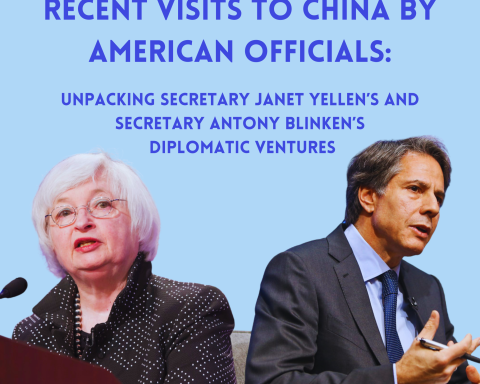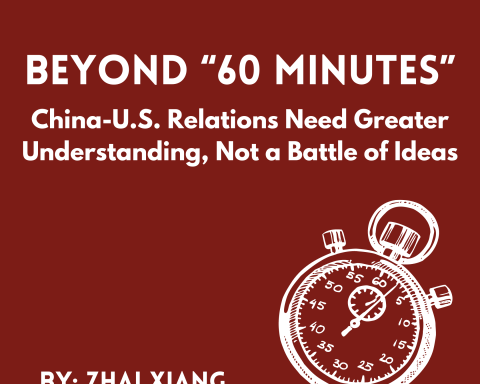“To open the rusty lock of the Korean nuclear issue, we should look for the right key” surmises Fu Ying, chairwoman of the Foreign Affairs Committee, the Standing Committee of the National People’s Congress, in a paper published by The Brookings Institution. Beginning with the end of the Korean War and finishing with the April 2017 Trump-Xi meeting in Mar-a-Lago, Fu presents a well-written and informative historical narrative of the Korean nuclear issue before offering some suggestions on how best to resolve this stubborn and long-standing dispute.
In her capacity as Director-General of the Asian Affairs Department of the Chinese Foreign Ministry, Fu experienced first-hand the complexities of the North Korean nuclear issue. A common refrain of hers throughout the paper is the ability of each party to come to some form of consensus, only for that trust to be degraded as agreements are left unfulfilled. Parties often appeared to have found the right key only to then disagree on how to turn it.
In the 1980s, as North Korea began to construct a plant to produce plutonium, the US pressured the USSR to force North Korea to accede to the Non-Proliferation Treaty (NPT). In this the US and USSR were successful, yet the USSR failed to provide the agreed-upon equipment to the North, and the North refused entry to inspectors from the International Atomic Energy Agency (IAEA) in violation of the NPT.
In June 1993, the US and DPRK conducted three rounds of talks which led to the signing of the US-DPRK Agreed Framework, in which North Korea agreed to end the construction of its two graphite-moderated nuclear reactors in return for two light water reactors and heavy fuel oil. Though work on implementing the agreement did begin, it was delayed and ultimately never carried out in full. Nevertheless, in 1994, former US President Jimmy Carter travelling to Pyongyang and met with then-leader Kim Il-sung. Carter confirmed that North Korea was willing to negotiate with the US, prompting the Clinton administration to favour negotiation over a more coercive approach.

Towards the end of the Clinton administration, tensions had eased to such a degree that discussions were held on a process to normalise diplomatic relations and to organise a presidential visit to North Korea. However, with the 2000 US election imminent, Clinton was unable to see these plans through to fruition, and the incoming Bush administration was much less open to negotiations. Moreover, in October 2002 evidence was found of North Korean efforts to develop uranium-based nuclear weapons. The Bush administration deemed the North to have violated the Agreed Framework and suspended bilateral talks, with North Korea similarly accusing the US of reneging on its commitments under the agreement.
Following this impasse, the US requested China’s assistance in resolving the nuclear crisis, which led to the formation of the Three-Party and then the Six-Party Talks (6PT) chaired by China. In total, six rounds of the 6PT took place between North Korea, South Korea, the US, China, Russia, and Japan from August 2003 to October 2007. Though the talks did achieve some successes, the agreements were frequently marred by delayed and failed implementation of obligations and disagreements over the conduct of participants.
Relations between the DPRK and US continued to deteriorate under the Obama administration, with the North conducting nuclear and missile tests and the US conducting military exercises with South Korea. Nonetheless, the two parties were able to release the February 29 ‘Leap Day’ Agreement in 2012, in which North Korea suspended nuclear and missile activities and would refrain from hostile actions, work to improve relations, and provide food aid. Even so, disagreement on how to interpret this document quickly followed as the cycle of testing, sanctioning and protesting gathered pace.
Fast forward to the present, and the Trump administration has stated that the era of strategic patience – the policy employed by the Obama administration – is over, and that “all options are on the table” in responding to North Korea. According to Fu, anti-North Korean sentiment is growing in the US, and a harder approach to North Korea appears to be coalescing. The THAAD anti-missile system has been completed in South Korea, and Trump has put increasing pressure on China to curb its neighbour’s nuclear ambitions.

With this in mind, Fu canvasses three possible futures for the Korean nuclear issue, the first two of which she is particularly critical. Firstly, if the approach currently favoured by the United States of ratcheting up coercive measures against the regime continues, the downward spiral of intensified sanctions in response to continued North Korean nuclear and missile bellicosity will make it increasingly difficult to consider options beyond acquiescing to North Korea’s demands or taking extreme actions with unknown consequences. Both parties are determined to achieve their goals and are unwilling to trust or compromise with the other.
Secondly, Fu briefly considers and then dismisses the possibility of DPRK regime collapse, which she describes as a goal counterproductive for easing tensions on the Peninsula and unrealistic in the short-term due to the stabilised domestic situation in the North.
The third and final possibility is that negotiations between concerned parties begin anew. This is Fu’s key to the rusty North Korean lock whose potential outcomes she is most hopeful and optimistic. Noting the relative success of previous negotiations, new talks will create conditions for addressing mutual concerns and for stabilising the situation. However, she warns prospective participants against approaching negotiations without considering developments since the last round of talks. In addition, Fu suggests that the best way to resolve the issue is to start with China’s proposed “double suspension” approach, in which both the US and DPRK simultaneously suspend antagonistic activities to allay the security concerns of the other. For the DPRK, this is its nuclear and missile activities, and for the US, its military exercises with South Korea.
Fu concludes with an allusion to Chinese science-fiction novel The Dark Forest, by Liu Cixin. “Only through dialogue can mutual security be achieved. In this way, we may help wrestle the Korean Peninsula out of its current vicious cycle and prevent Northeast Asia from turning into a Dark Forest”.
You can read Fu Ying’s paper in its entirety here.
For related articles on the Korean nuclear issue published by the US-China Perception Monitor, see also Daniel Grober’s analysis of China’s conflicting priorities on the Korean Peninsula, and Justin Elliott’s commentary on the current state of affairs in US-China-DPRK relations.
By JUSTIN ELLIOTT MAY. 11, 2017
Justin Elliott is a Spring 2017 intern at The Carter Center China Program.




